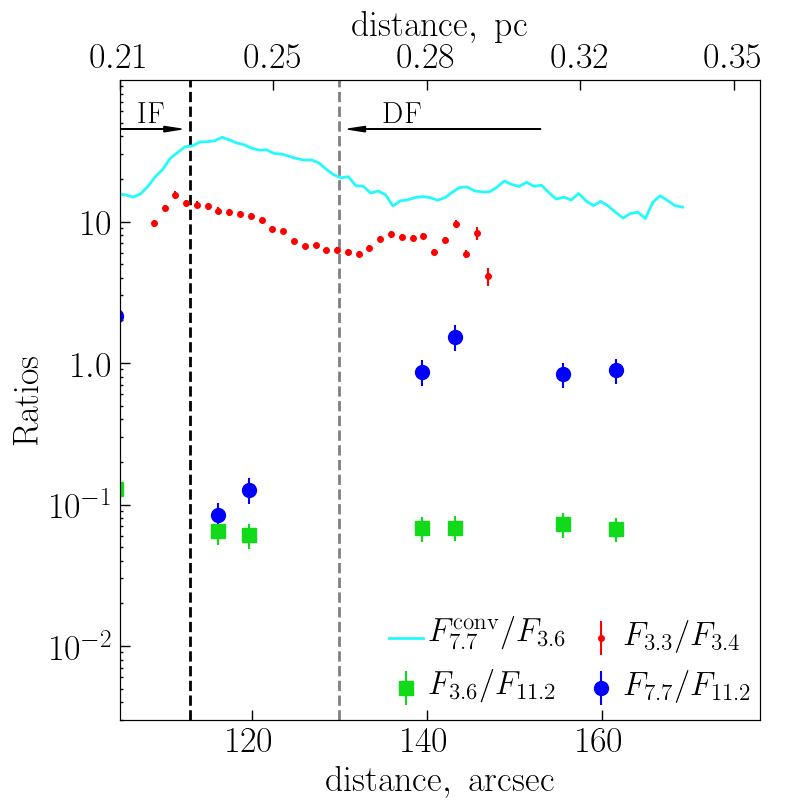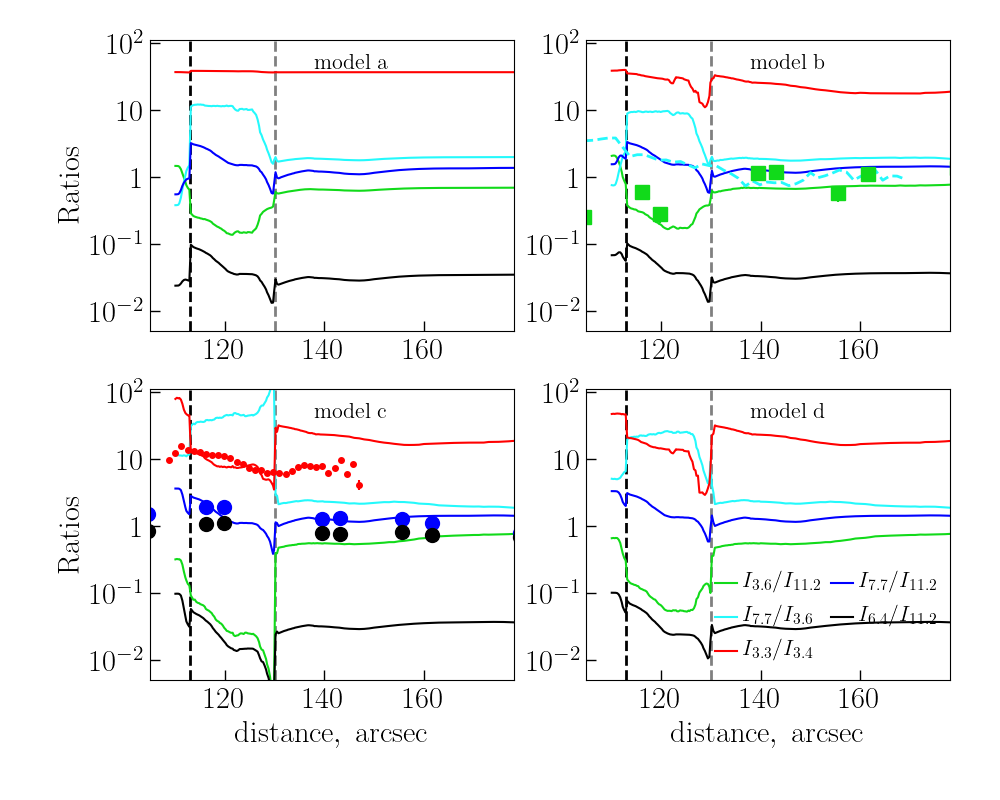We investigate the mid-infrared (IR) emission in the Orion Bar photodissociation region, using archival photometric and spectroscopic observations from UKIRT, Spitzer, ISO, and SOFIA telescopes. Specifically, we consider flux densities of the emission bands at 3.3, 3.4, 3.6, 6.6, 7.7, 11.2~μm in several locations and a spectrum from 3 to 45~μm in one location. We study the behaviour of band flux ratios, which are sensitive to external conditions, as revealed by their variations with the distance from an ionizing source. Assuming that the mid-IR emission arises mostly from polycyclic aromatic hydrocarbons (PAHs), and that a weak emission feature at 3.4~μm is related to PAHs with extra hydrogen atoms (H-PAHs), we trace variations of the ratios using a model for PAH evolution. Namely, we estimate how populations of PAHs of different sizes, hydrogenation and ionization states change across the Orion Bar over a time interval approximately equal to its lifetime. The obtained ensembles of PAHs are further used to calculate the corresponding synthetic spectra and band flux densities. The model satisfactorily describes the main features of the ratios I3.6/I11.2, I7.7/I11.2, I7.7/I3.6 and I3.3/I3.4. We conclude that the best coincidence between modelling and observations is achieved if C loss of PAHs is limited by the number of carbon atoms NC=60, and the band at 3.4~μm may indeed be attributed to H-PAHs. We confirm that large cations dominate at the surface of the PDR but small neutral PAHs and anions are abundant deeper in the molecular cloud.

|

Here is the link to the paper in arxiv.org
| |



